Affiliate links on Android Authority may earn us a commission. Learn more.
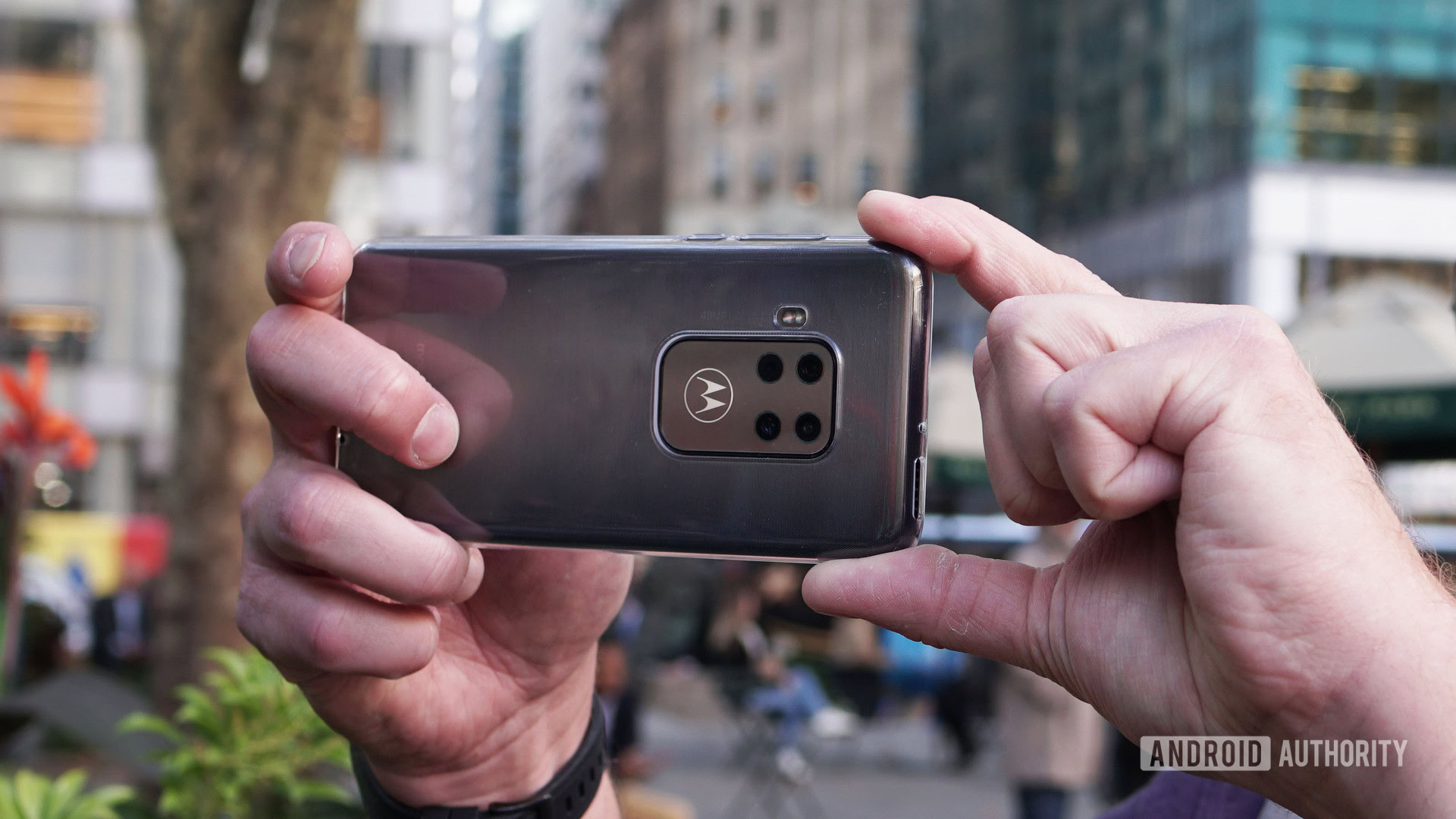
Motorola One Zoom
What we like
What we don't like
Motorola One Zoom
Looking to shore up its mid-range offerings, the Motorola One Zoom sees the company target camera lovers with an affordable quad-camera array. It joins the Motorola One Action and Motorola One Macro, forming a trio of devices that aim squarely at social media-loving folks who’re always looking for that perfect shot.
Motorola One Zoom review: The big picture
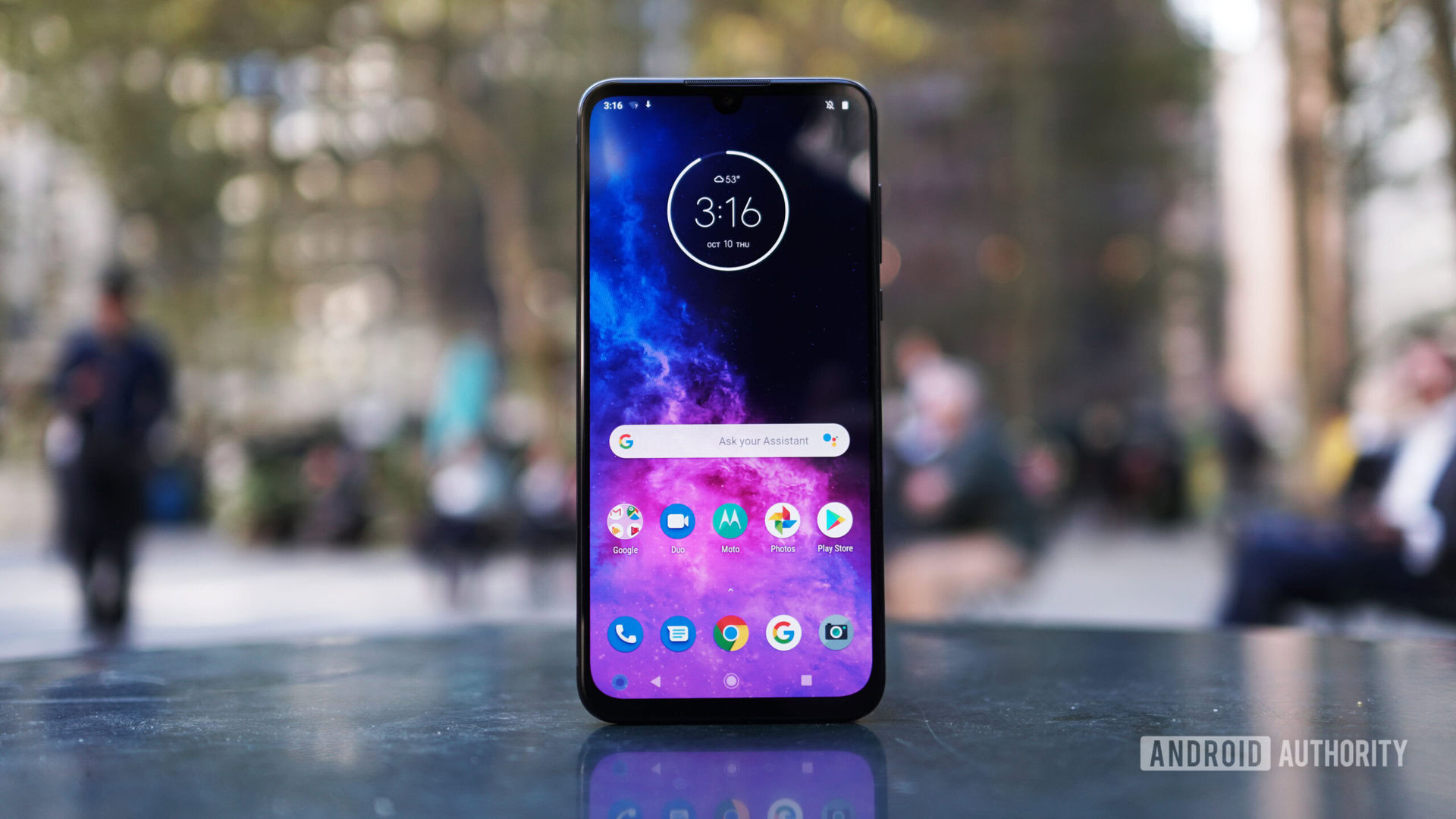
There is a dearth of phones in the $300 to $500 range. Many of today’s devices are either pricey flagships costing over $1,000 or affordable entry-level fare with retail points under $200. This leaves the middle of the market underpopulated and somewhat muddled. You’ll find phones such as the Samsung Galaxy A70/A80, Google Pixel 3a XL, and Nokia 7.2 filling this void, and now Motorola has another affordable mid-ranger of its own.
Moreover, flagships from Apple, Huawei, LG, and Samsung have largely adopted three- and four-camera systems on the rear panel to expand the possibilities of phone-based photography. Motorola is here to show us that one needn’t spend $1,000 to get that flagship camera experience.
What is it like to use the Motorola One Zoom?
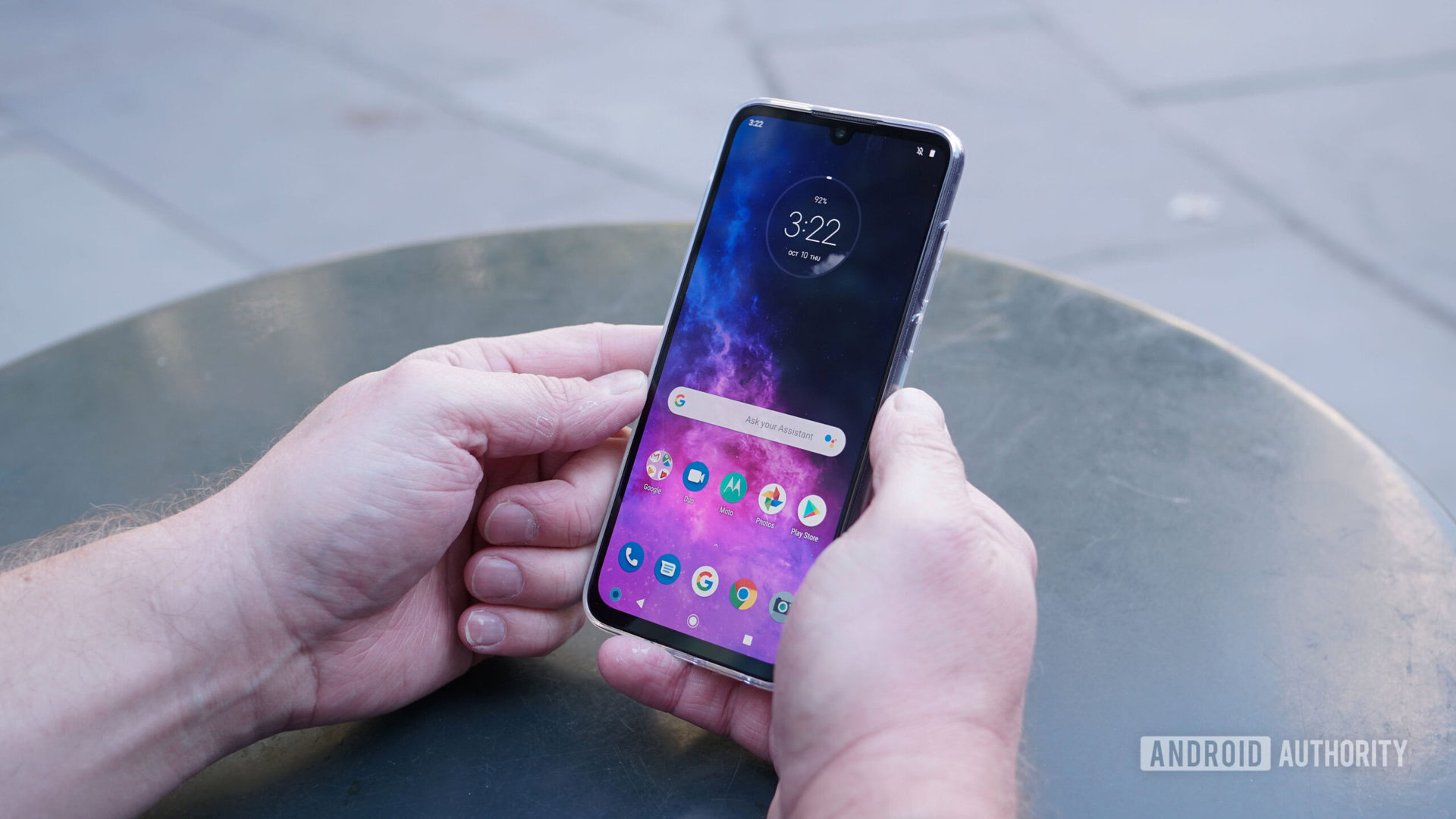
Like many modern phones, the Motorola One Zoom is a metal-and-glass slab. It’s comparable in size to the Google Pixel 3 XL, standing 158mm tall, 75mm wide, and 8.8mm deep. The Zoom features Panda King glass on the front and Gorilla Glass 3 on the rear. The metal frame is robust. It’s a large and somewhat heavy handset, thanks in part to the generously proportioned display, and may not be the best device for those with smaller hands.
Motorola offers the Zoom in three colors: Brushed Bronze, Cosmic Purple, and Electric Grey. All three feature a finish that looks like brushed metal, with a grain that runs from side to side. I really like all three shades, though perhaps the purple is my favorite. At the very least, the finish helps the Zoom stand out from the me-too stylings of many modern slabs.
About the camera module. First, let me say: Finally! Motorola has finally chosen to use its “batwing” logo as a notification beacon. The rear-mounted logo lights up and glows when you have unread messages or incoming calls. Finally! The phone’s four cameras are positioned in a square above the logo. The whole module is set on a large glass platform. You can’t miss it.
The phone has a robust set of controls and ports. A ridged power button and thin battery toggle are on the right edge, while the USB-C port and headphone jack are on the bottom, and the SIM tray and speaker are on the top.
Finally! Motorola has finally chosen to use its 'batwing' logo as a notification beacon.
Motorola does not waterproof its phones, at least not yet. That means the One Zoom has a protective nanocoating meant to ward off light splashes, though it is not enough to keep the phone safe in the event of submersion. In other words, no IP rating; and it’s not rugged, either.
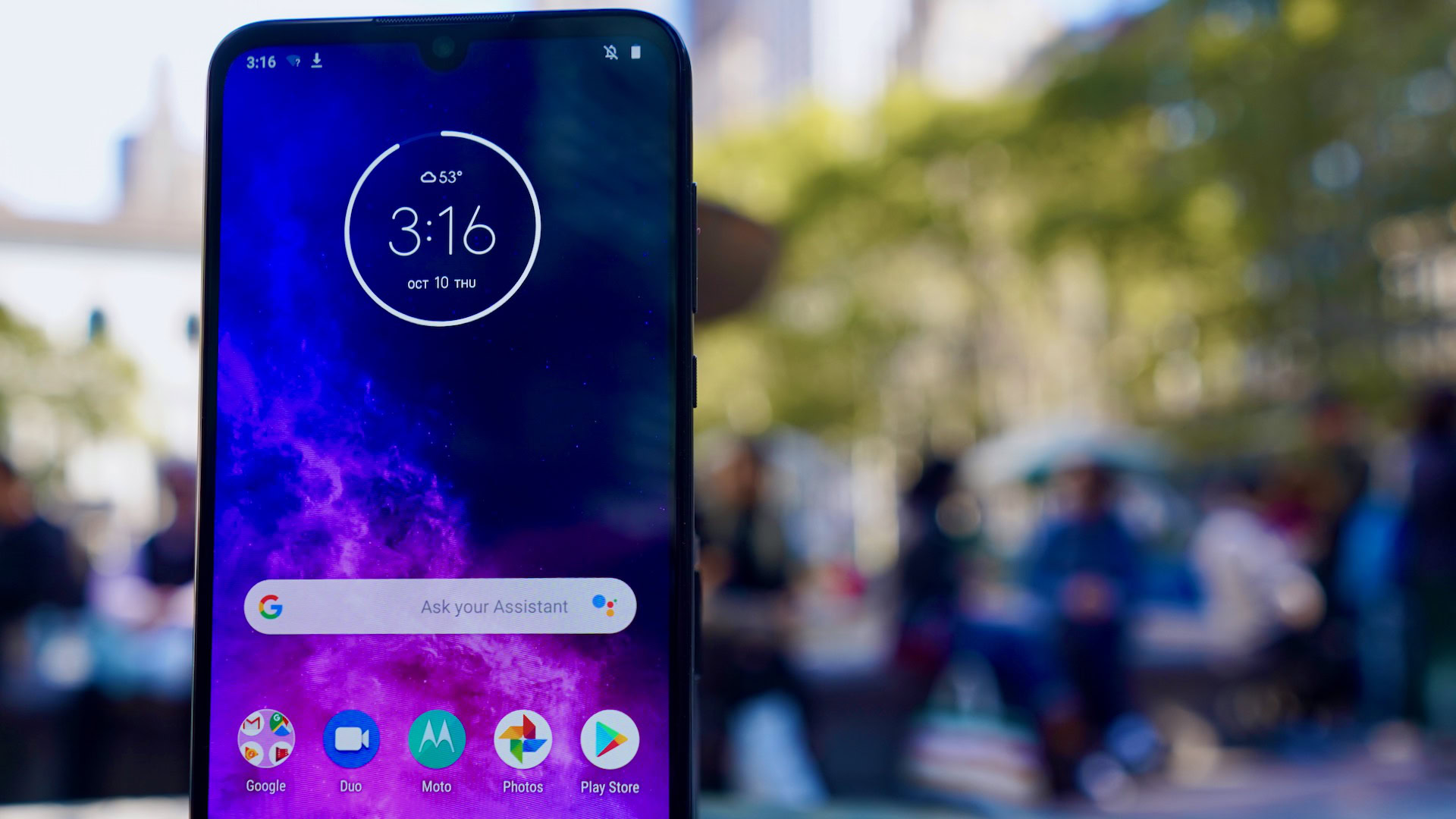
Last, but not least, the Moto One Zoom has a large 6.4-inch Max Vision display. It’s an OLED panel with Full HD+ resolution (2,340 x 1,080) and a 19:9 aspect ratio. Motorola says the screen-to-body ratio is 85%. The side bezels are slim enough, but there’s a bit of a chin and a forehead with a U-shaped notch for the selfie camera. It’s a fine screen. I found it to be bright, crisp, and accurate. Viewing angles were great, and it was easy to read outdoors. Web sites, Instagram, and video content all looked good on the screen.
The Motorola One Zoom looks good and works well.
Does it have good battery life?
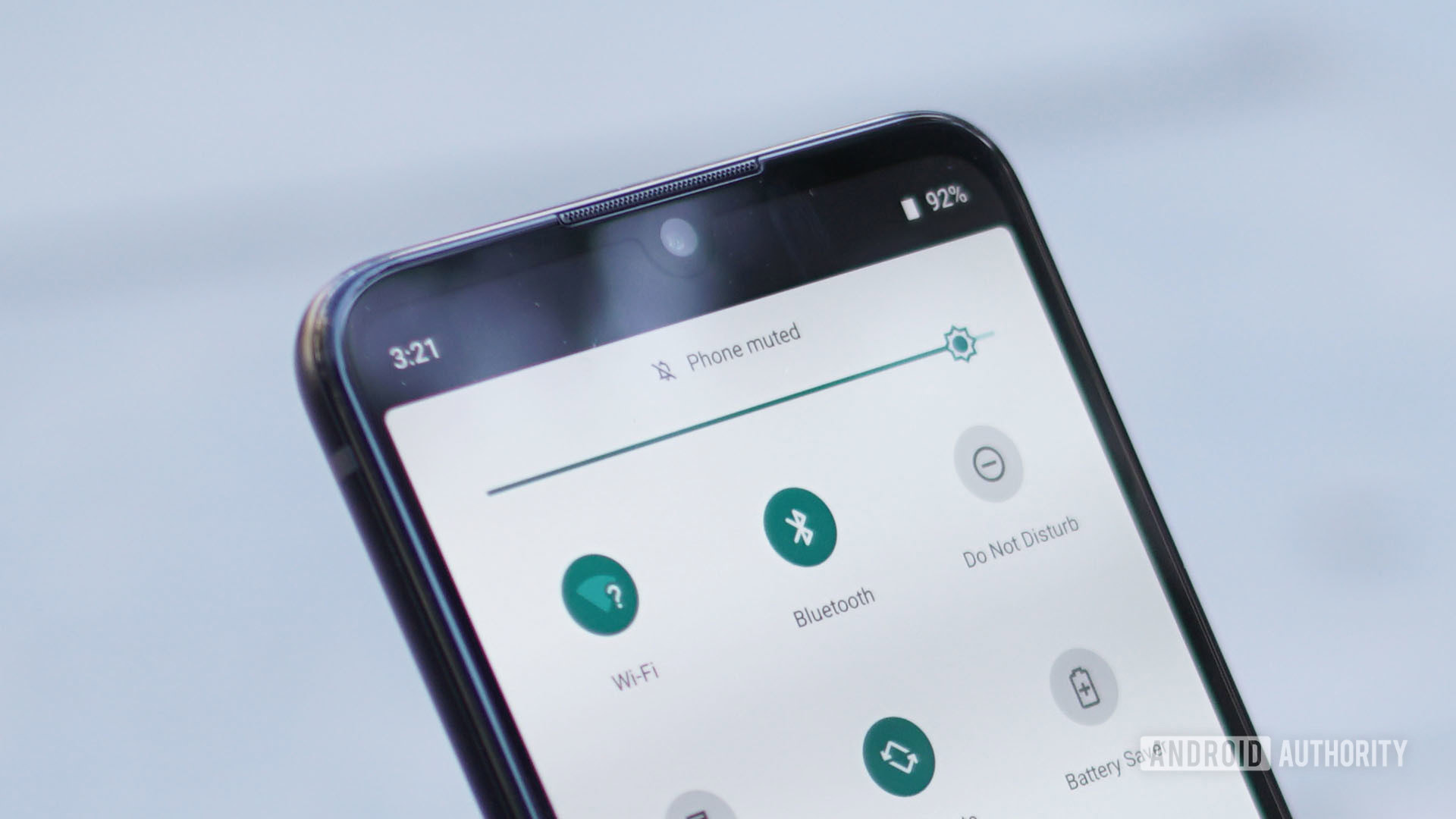
Motorola gave the One Zoom a massive 4,000mAh battery. That’s the size we expect to see in high-cost handsets, and it’s a welcome addition to the mid-range Zoom. In addition to the high-capacity lithium-ion power cell, the phone supports 15W rapid charging and ships with Motorola’s TurboPower charger for rapid refills.
In everyday use, I found the One Zoom easily pushed through a full day with power to spare. That means you can use the phone hard from morning through midnight without worry. The phone often had more than enough juice to get through another half day before requiring a recharge.
Also read: Fastest charging phones
Recharging the battery doesn’t take too, too long. A 30-minute top-off gives you a 40% boost. Specifically, the Zoom went from 25% to 65% in that time. A full recharge from 0% takes just under 100 minutes, which is on par with other devices in this category.
You won’t find wireless charging here, but that’s not surprising given the price point.
Bottom line, the battery is more than adequate.
What is it like to use the camera?
The Motorola One Zoom earns its name from the 3x optical zoom camera that is the heart of the phone’s four-camera setup. Like many modern phones, the Zoom has standard, wide-angle, and telephoto lenses, along with a depth camera to assist with portraits/bokeh. Other hardware features include a two-tone LED flash and optical image stabilization.
A 48MP sensor from Samsung sits under the main lens. It bins images down to 12MP and has an aperture of f/1.7. The wide-angle shooter has a 16MP sensor and the 3x telephoto has an 8MP sensor. The depth sensor rates 5MP. Software tools include the basics, such as photo, video, portrait, panoramas, and live photos, as well as Motorola-specific features such as spot color, cinemagraph, cutout, and smart composition.
Switching from the standard to zoom to wide-angle lenses is achieved by tapping a little “1X” that appears in a circle next to the shutter button. It changes to “3X” and “.5X” as you cycle through the lenses. It’s a little slow to react as you find the lens you want. I wish it were faster. Another small button allows you to choose from the other shooting modes, as well as manage the camera’s settings.
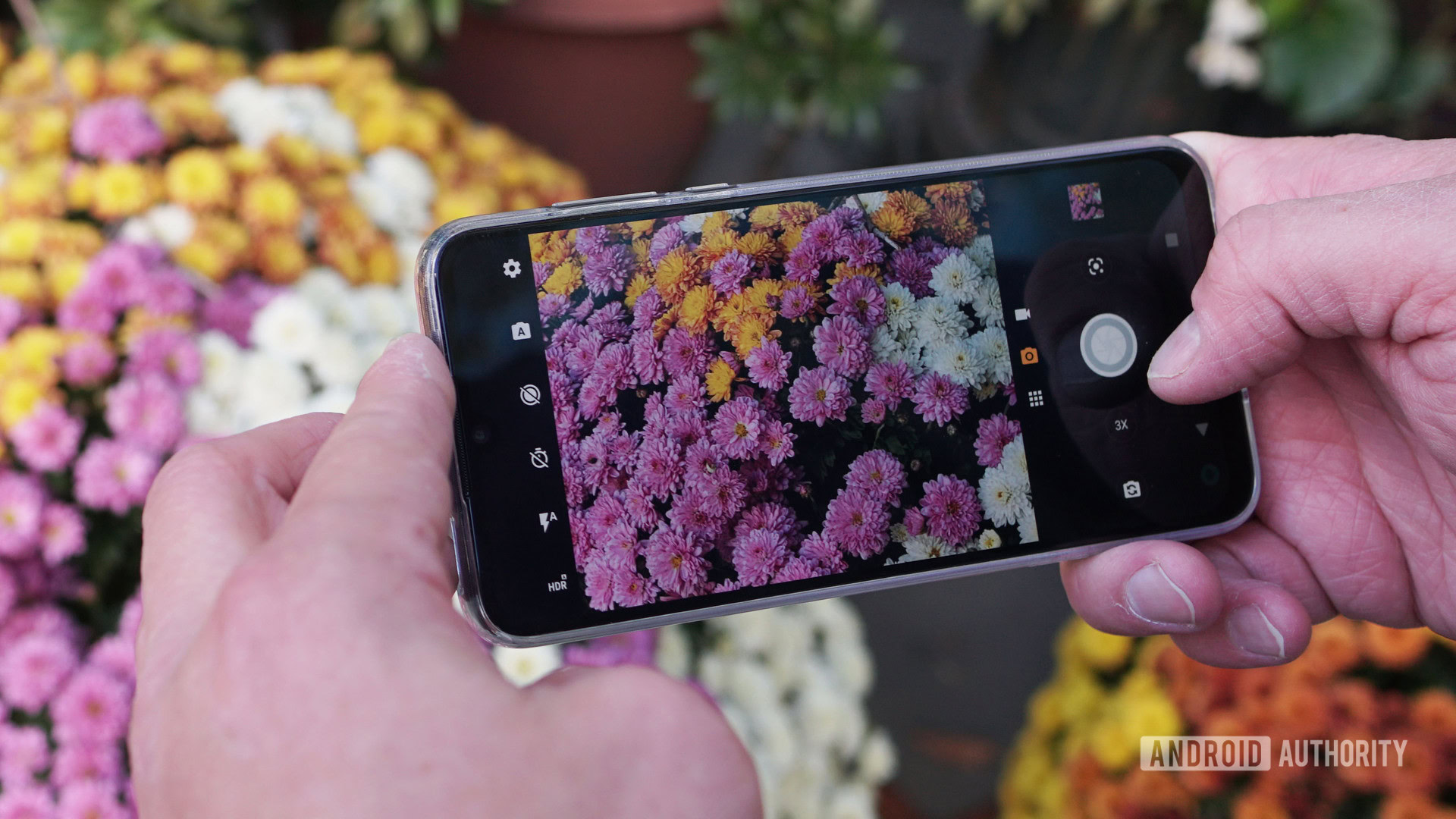
But how are the photos? Well…
I spent an afternoon taking shots around Manhattan and the results are average at best. You can see in some of the clean daytime picture that every looks on point: good focus, proper exposure, accurate white balance. Add any amount of contrast, however, and things get screwy. The phone’s HDR tool fails to reign in highs and lows, leaving photos with half under- or over-exposed regions (see the fountain shots).
Focus is solid at the 3x zoom setting, and the photos aren’t too noisy. I see some grain, even in the bright daylight shots, but not overmuch.
The Zoom really falls apart in low-light shooting, even with night mode. You can see the pictures I took at night are washed out, grainy, and simply unrepresentative of what my eyes saw.
Video results are better, but still inconsistent. Grain showed up here and there, although focus and exposure were more consistent.
Full resolution camera samples are available here.
What I like about the Motorola One Zoom
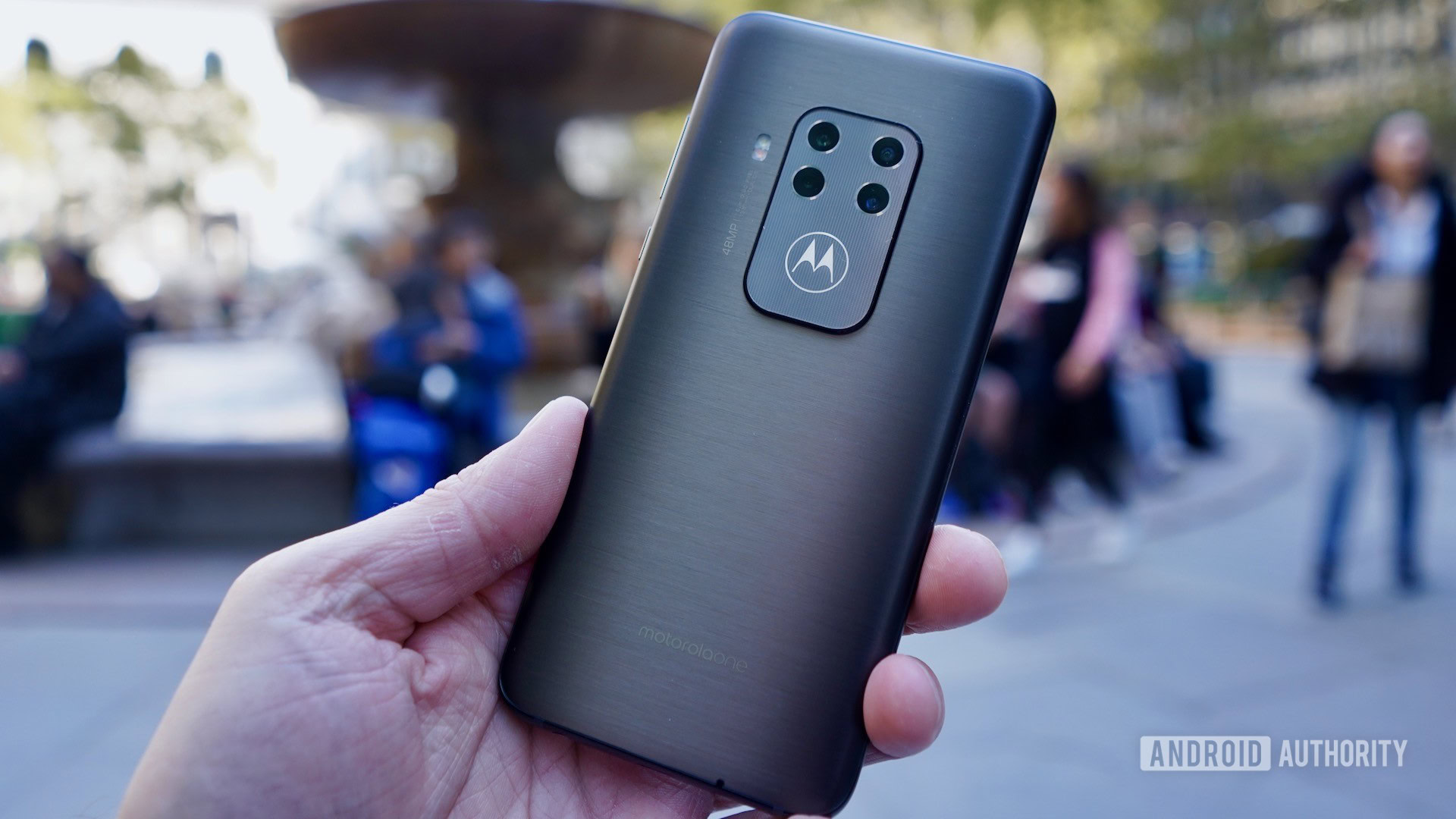
Motorola crafted a fine piece of hardware in the One Zoom. It’s made from high-quality metal and glass, comes in attractive finishes, and covers the basics in terms of features. Some will surely appreciate the 3.5mm headphone jack, the clean build of Android, Motorola’s custom software tools, and the generous display. Storage is plentiful at 128GB out of the box, and can be expanded thanks to microSD support.
I love the light-up Motorola logo on the back. Love.
The phone delivers excellent battery life, fine voice quality, and even reasonably good sound via the single speaker. It should go without saying that I enjoy the flexibility that comes with a four-camera setup like the one on the rear of the Motorola One Zoom.
I love the light-up Motorola logo on the back. Love.
What I don’t like about the Motorola One Zoom
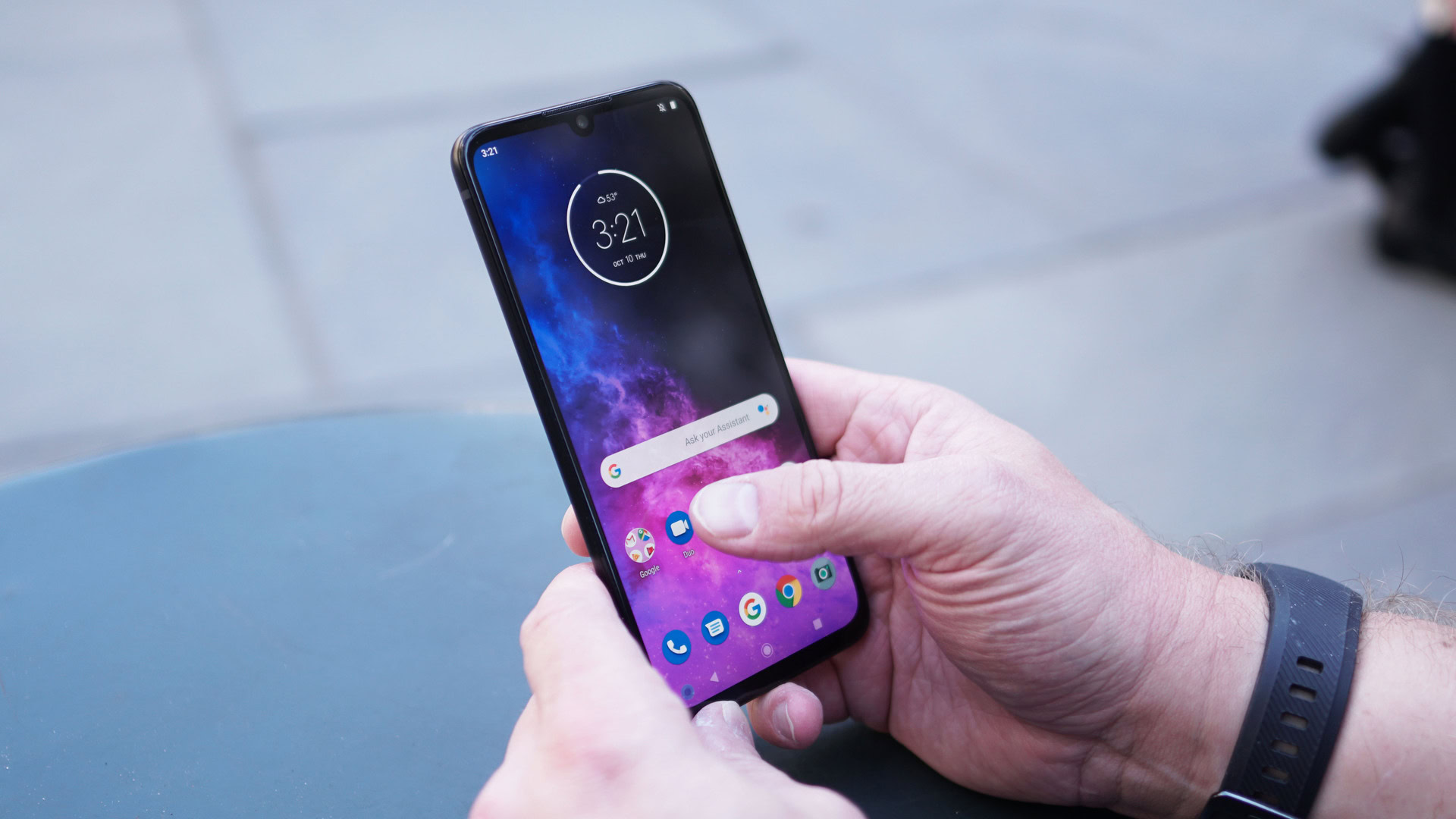
The Zoom is not without faults. I have to ding Motorola for its lack of water- and dust-proofing. Phones in this pricing bracket should offer more than mild splash resistance.
The Snapdragon 675 processor often felt sluggish. I ran several benchmark tests and the Zoom landed below the middle of the pack in each. The camera app suffers the worst, though I noticed lagging and slow behavior from other apps during the time I spent with the phone. The Zoom is not a killer gaming device.
The Snapdragon 675 processor often felt sluggish. The Zoom is not a killer gaming device.
Battery life may be impressive, but I found myself missing wireless charging. True, wireless charging is an uncommon feature at this price point, but it would boost the Zoom’s appeal.
I definitely don’t love the under-the-display fingerprint reader, which was finicky and slow at best.
Continue reading: Motorola One Action review
Who is the Motorola One Zoom for?
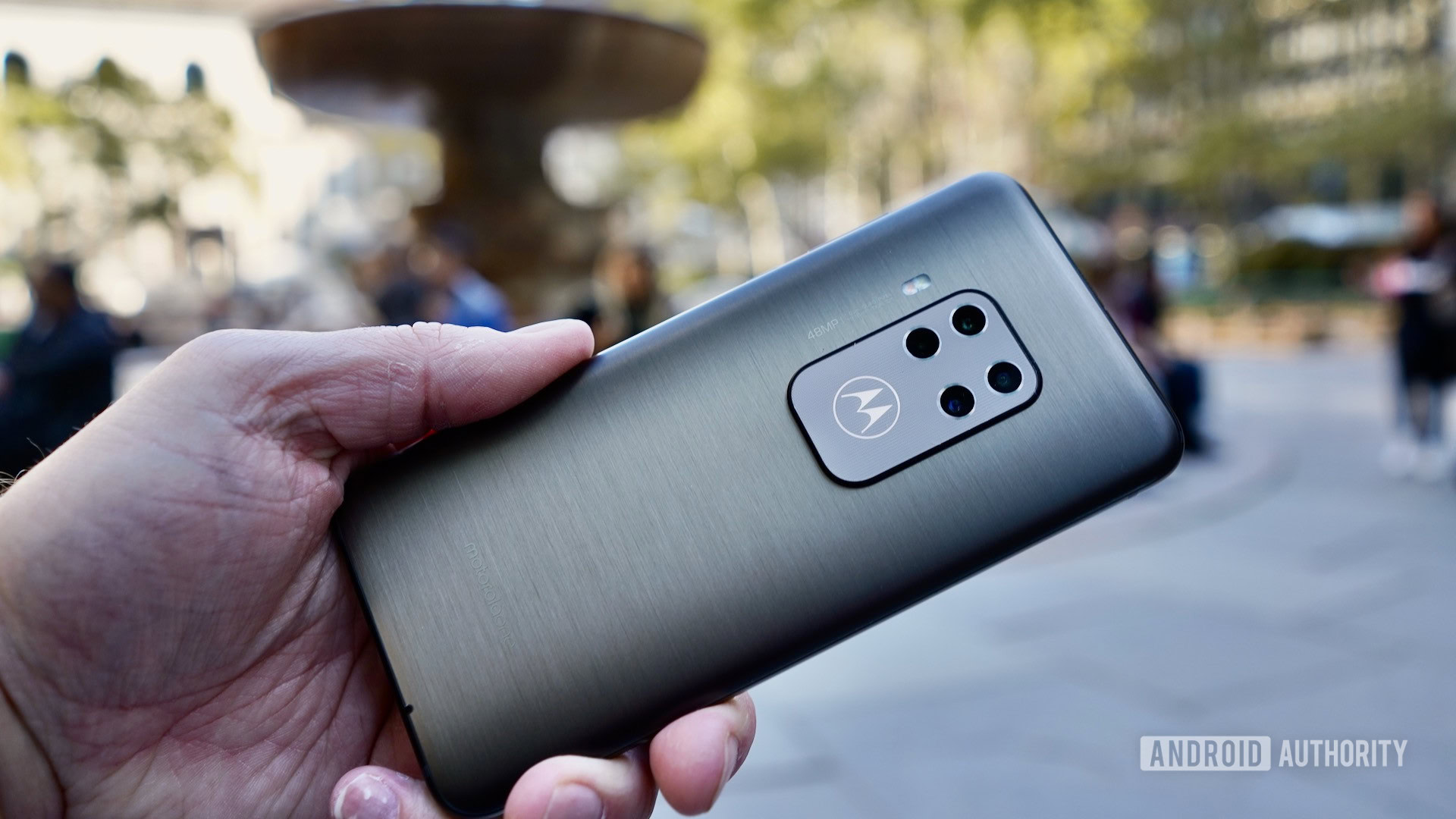
Motorola made the One Zoom for shutterbugs on a budget. If you’re aching for the multi-camera arrays common to $1,000 flagships, Motorola gets you in the door for less than half that at $450.
The One Zoom is also for those who prefer a cleaner build of Android. Motorola ships the device with a near-stock build of Android 9 Pie, and includes its useful and tasteful extras as a separate app (called Moto). Moreover, Motorola has committed to making timely security upgrades, as well as one major system-level upgrade. If software is paramount, the Zoom has you covered.
Motorola One Zoom review: Should I buy it?
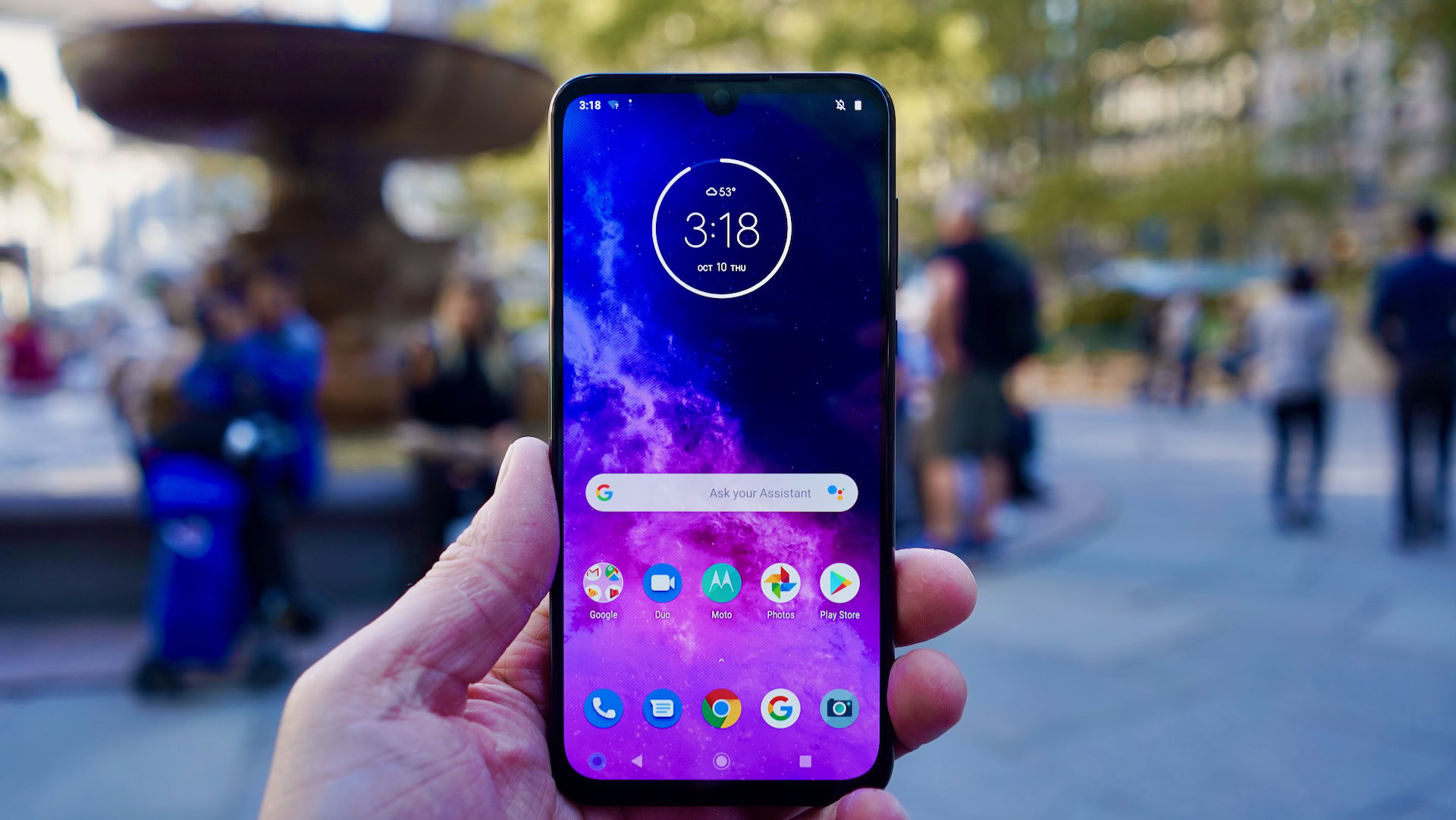
Only some people should by the Motorola One Zoom. If you’re looking for a big screen that’s wrapped in really nice hardware, the Zoom has you covered. If you want a standard, telephoto, wide-angle camera setup, the Zoom has you covered. If you want good battery life, rapid charging, and lots of storage, the Zoom has you covered. If you prefer near-stock Android and like Motorola’s software tools, the Zoom has you covered. These are all reason enough to consider the Zoom.
If you want a $400 – $500 phone with a good camera, you’ll be better off with a Google Pixel 3a XL, despite the Pixel’s single camera arrangement. It simply takes better photos.
This concludes our Motorola One Zoom review. Be sure to let us know what you think in the comments.